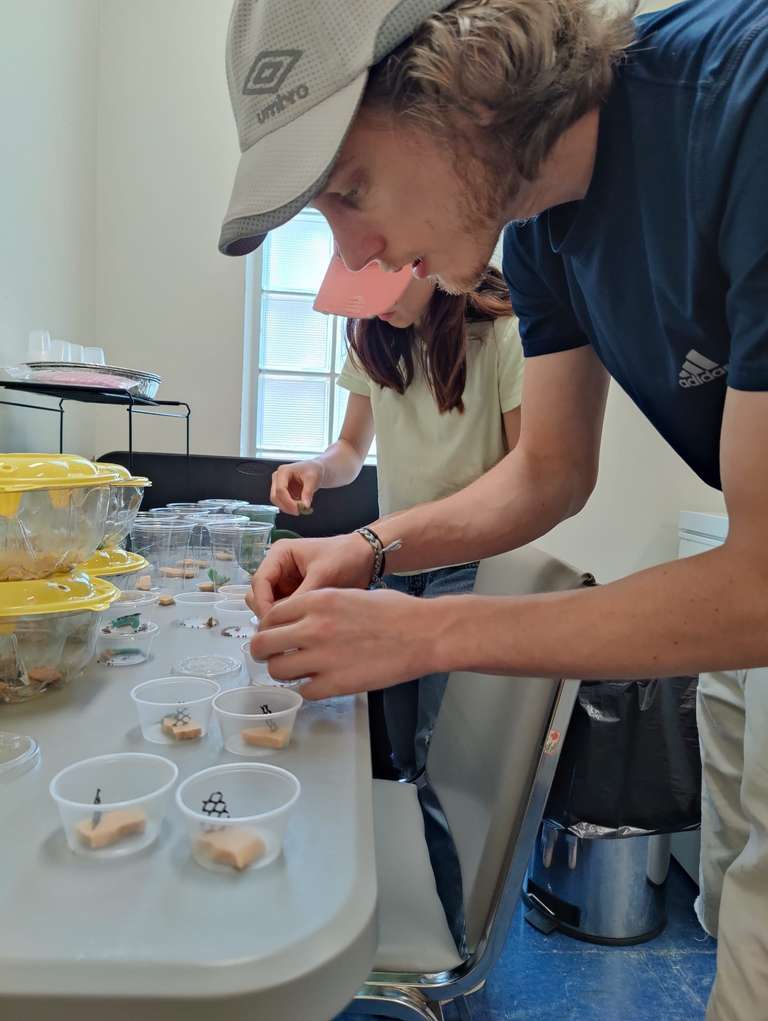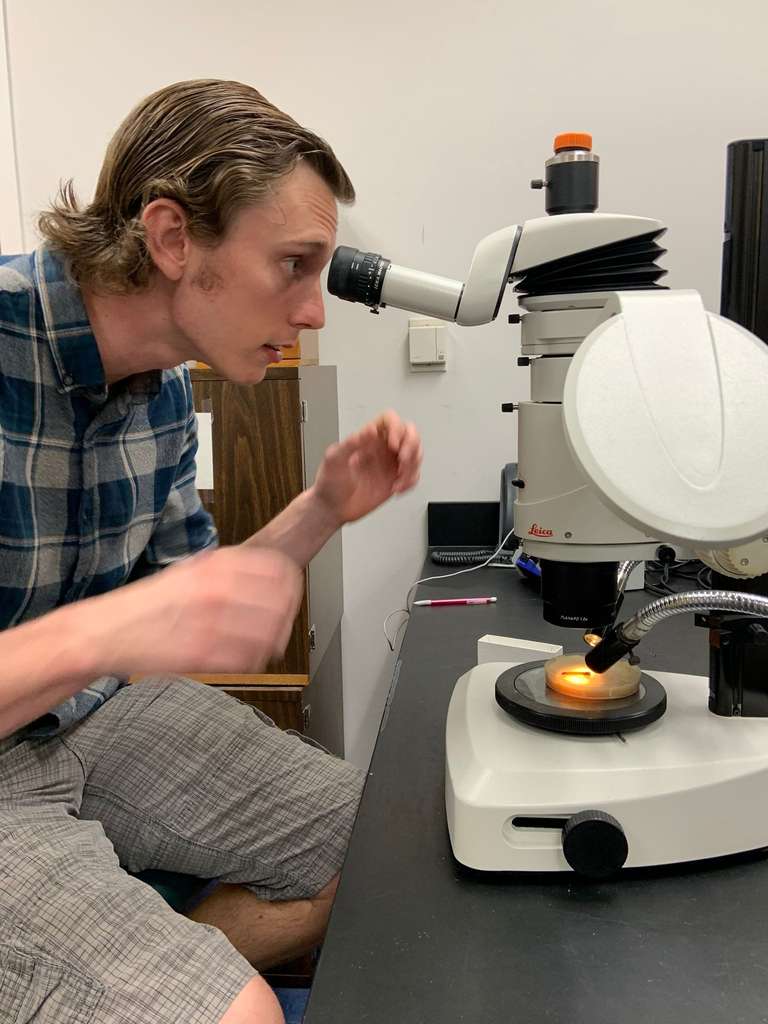Dissecting "Oruguitas"
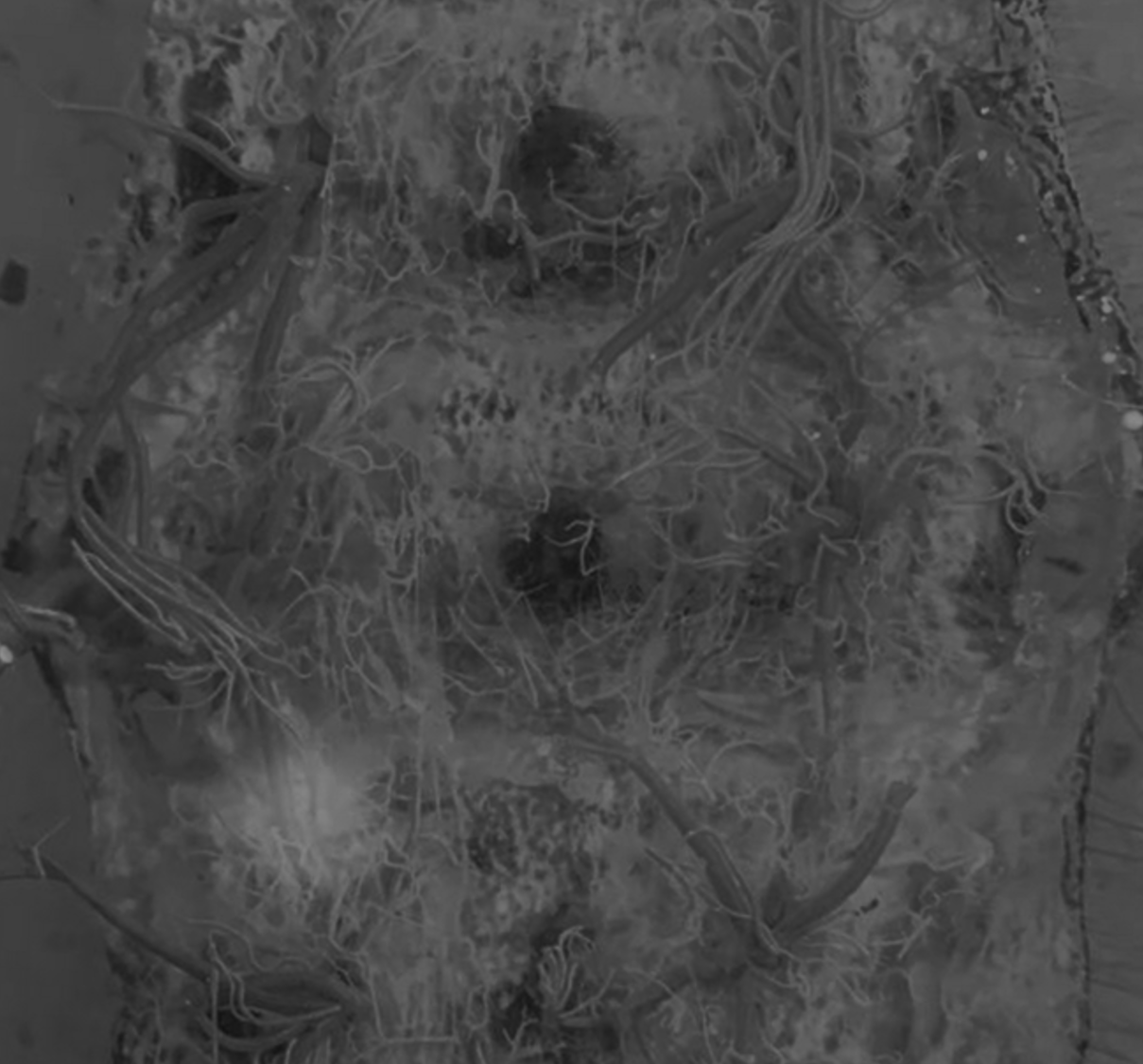
Purpose: To identify genes in the Bella Moth (or the Utetheisa ornatrix species) which help this moth sequester toxic compounds, which could have longer-term medicinal benefits. Here, I served as an assistant in collecting, raising, and dissecting caterpillars (or "oruguitas" en Espanol - the lead scientists is from Guatemala) whose tissue will be used for qPCR, differential gene expression, and metabolomics-based analysis. A big thanks to Ana Isabel Lopez-Cacacho for letting me help with her research!
Overview: As a brief overview, Figure 1 shows the collection, raising, and dissection phases of this work. There were so many caterpillars... over 200 in some generations! While I helped collect and raise the Bella Moth caterpillars for the formal experiments, I performed dissections on tent caterpillars to gain experience with dissections (Isabel completed on the official samples dissections).
As an example of dissecting the tent caterpillars, Figures 2 and 3 show a pre- and post-dissected tent caterpillar. Some images were taken through the microscope to show the internal structures (or organelles) of the caterpillar.
While I won't give away secrets from the experiments here, differential gene expression of caterpillars raised on toxic and non-toxic diets may reveal compounds important to toxin sequestration... If you're interested, reach out to Ana Isabel Lopez-Cacacho for more on her work!
Fig. 1 Collecting, raising, and observing Utetheisa Ornatrix caterpillars
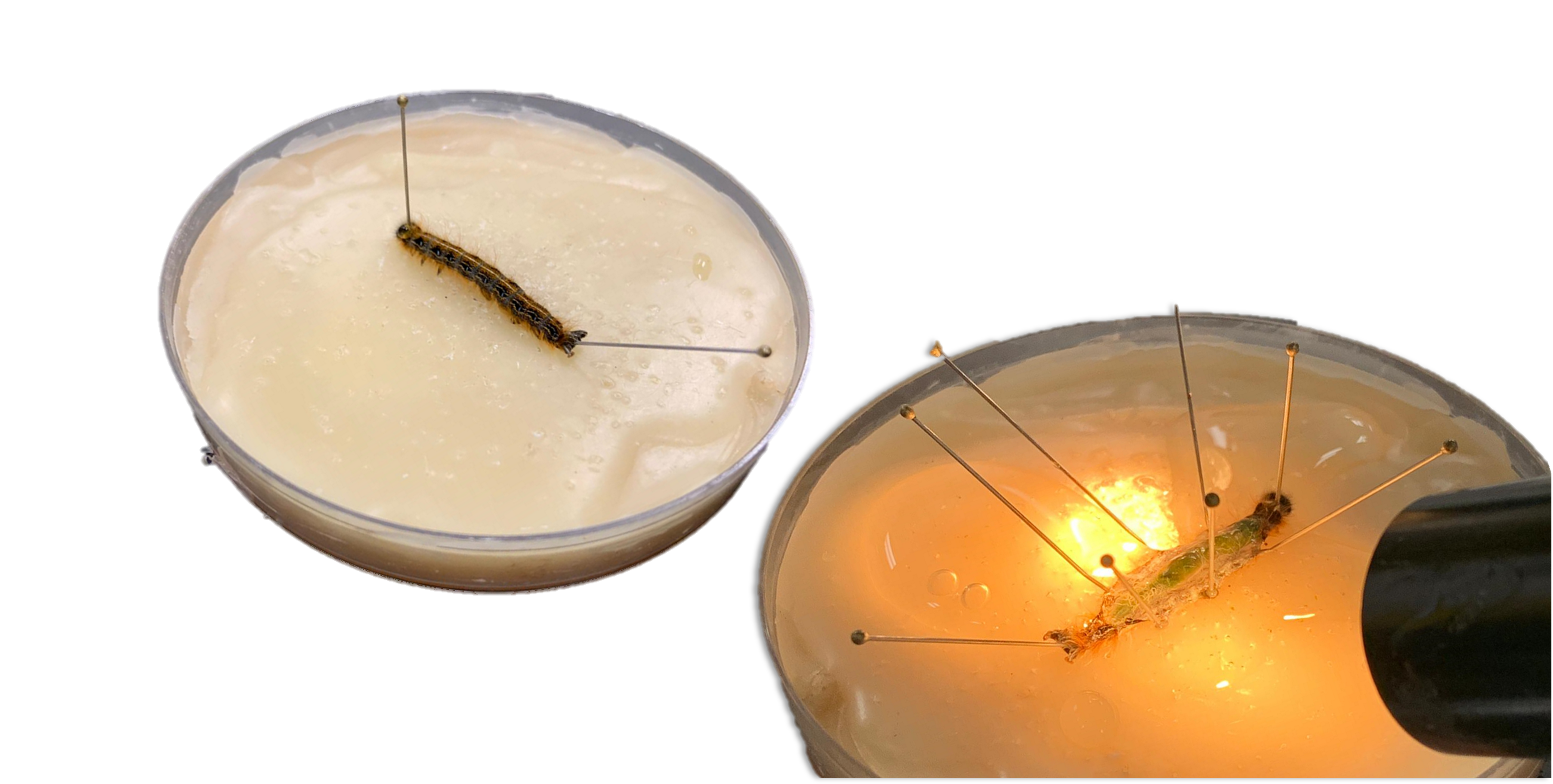
Fig. 2 Dissected tent caterpillar in a puck of parafin wax, placed under the microscope. The leftmost image shows the caterpillar pre-dissection, whereas the right shows the caterpillar post-dissection
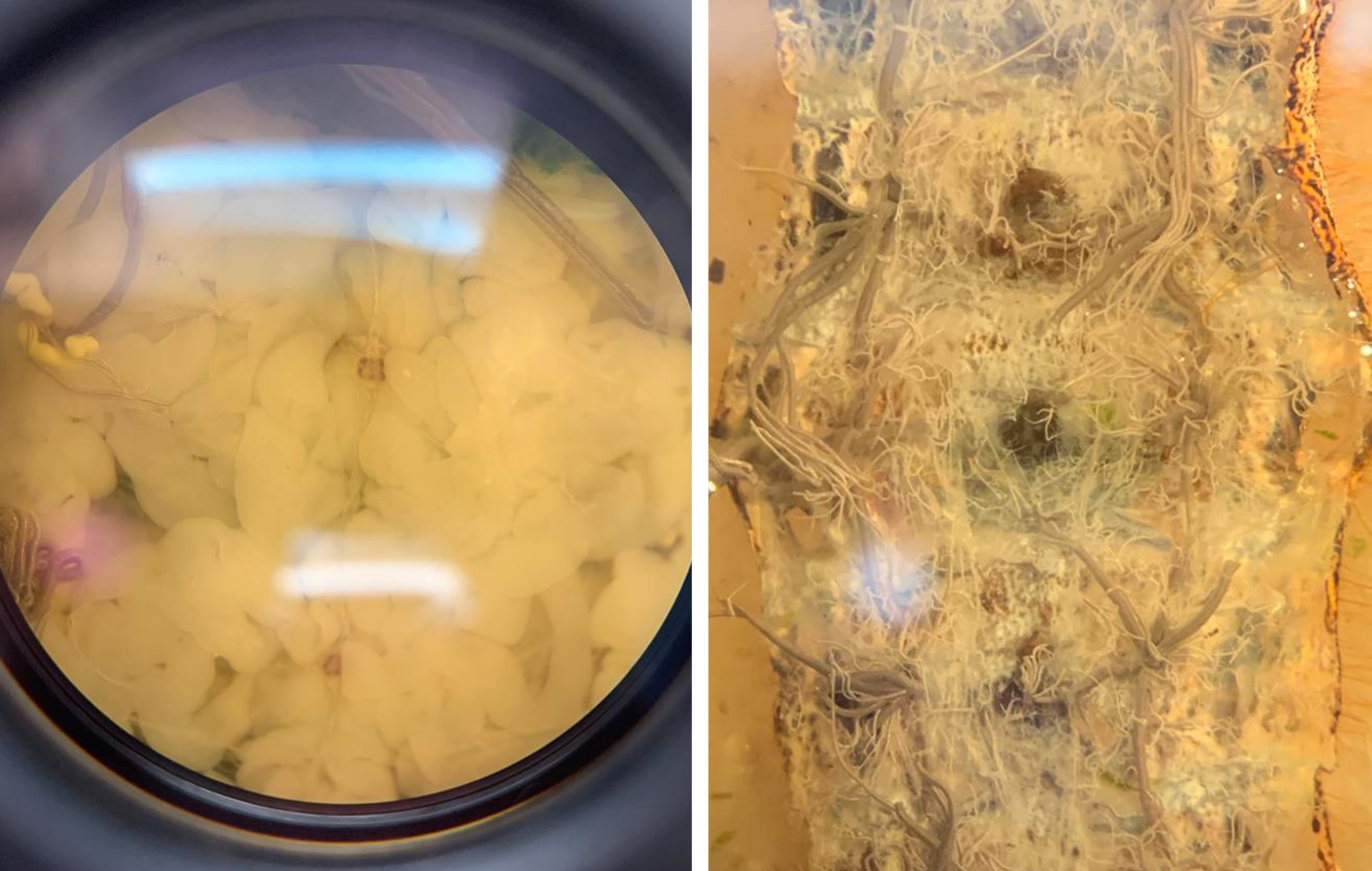
Fig. 3 Organelles of the dissected tent caterpillar, showing individual neurons surrounded by fatty tissue in the leftmost image, and showing the integument (essentially the skin) from the inside on the right image

